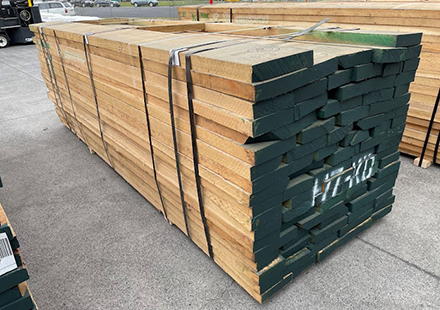The news that US hardwood timber exports to Australia increased by 22% in 2023 with nearly 9000 cubic metres of red oak coming into the country should not come as a surprise to anyone.
The end to native timber harvesting in Victoria and Western Australia has certainly had a massive flow-on effect.
In Victoria alone, Australian Sustainable Hardwoods 30, 40-foot containers carrying American hardwood from the country’s north-east arrives in Heyfield.
In 2017, ASH lost half its Vic Ash volume, which gradually diminished further to only three per cent of its supply in 2023.
The Victorian situation has certainly amplified the significance of imported hardwood in Australia’s timber market.
With restrictions on native timber, the demand for imported hardwood has surged, leading to a complex interplay of economic, environmental, and social factors.
Conversely, Western Australia has continued with some native timber logging, albeit with stringent regulations aimed at sustainable forestry practices.
While the WA State Government has implemented measures to promote sustainable forestry practices, questions remain about the long-term viability of native timber logging in the face of environmental concerns and shifting consumer preferences towards sustainability.
The American Hardwood Export Council says that while it does not have data available linking the end of native timber harvesting in Victoria and WA to the boost in exports to Australia, “we think that that is a factor that has contributed to the increase in demand”.
The importation of hardwood from the United States into Australia has obviously become a significant component of the timber industry. The demand for hardwood remains robust in various sectors, including construction, furniture manufacturing, and crafting.
While Australia possesses its own native hardwood species, the allure of imported hardwood lies in its diverse range, quality, and sometimes lower cost.
However, the reliance on imported hardwood has sparked debates regarding its environmental implications. Critics argue that the transportation of hardwood across oceans contributes to carbon emissions and exacerbates climate change. Moreover, concerns have been raised regarding the sustainability practices in the source countries. Despite certification systems like the Forest Stewardship Council (FSC), ensuring sustainable logging practices, questions linger about the actual enforcement and efficacy of such measures.
Advocates of the ban argue that it encourages the exploration of sustainable alternatives, such as plantation-grown timber or innovative materials like bamboo. They contend that the ban serves as a pivotal step towards fostering a more sustainable and resilient timber industry, aligned with Australia’s commitments to combat climate change and preserve its natural heritage.
However, critics argue that the ban merely shifts the environmental burden elsewhere, without addressing the underlying issues of consumption and resource management. They emphasize the need for comprehensive policies that tackle both the demand and supply sides of the timber industry, promoting responsible consumption while supporting sustainable forestry practices domestically and abroad.
In navigating this complex landscape, policymakers, industry stakeholders, and environmental advocates must strive to strike a balance between economic interests, environmental conservation, and social welfare. Collaborative efforts towards promoting sustainable practices, investing in research and development, and fostering community engagement are essential to steer the timber industry towards a more sustainable and equitable future, both in Australia and globally.







